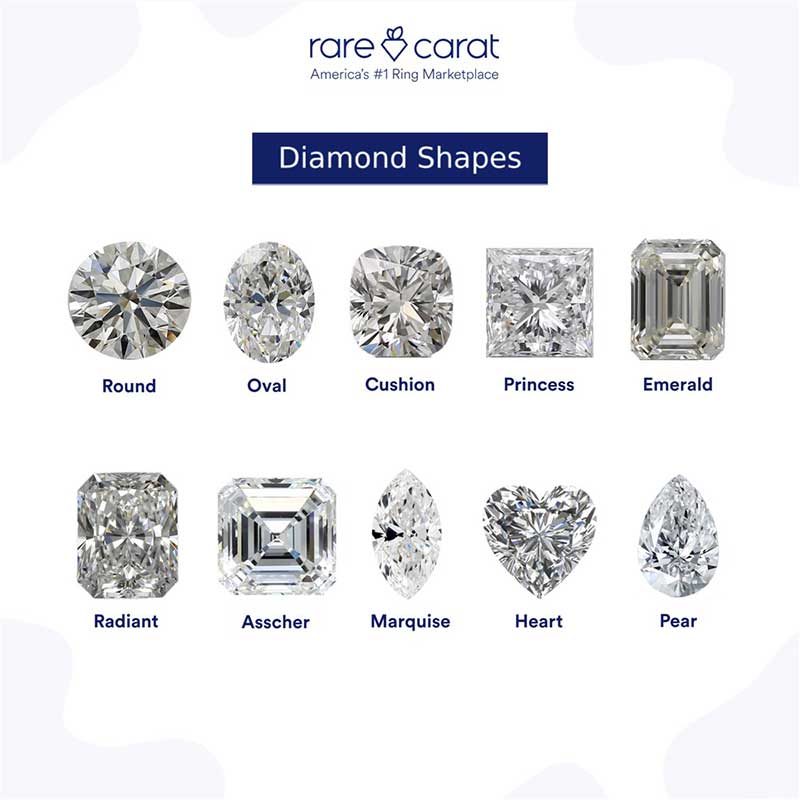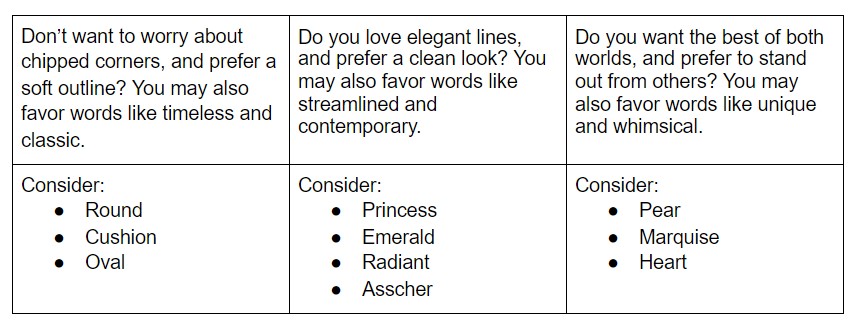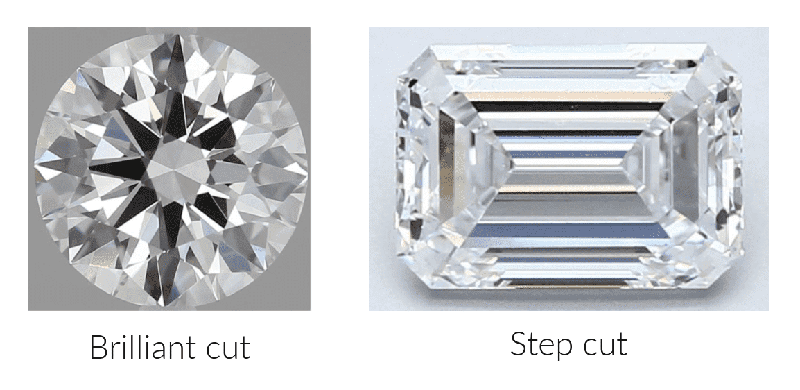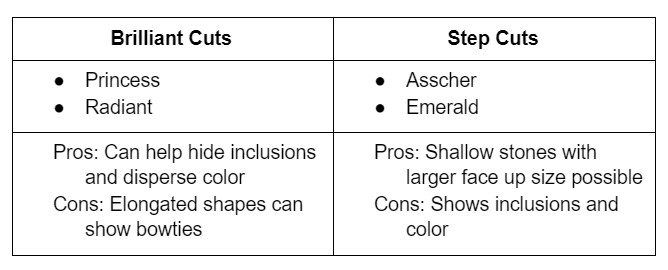Find Your Perfect Diamond Shape | Rare Carat
Did you know that diamond shape ranked #1 out of all the most important features of an engagement ring in 2020? Rightfully so, as this is one of the most immediately discernible features about the ring. One could say this is where your personality begins to demonstrate itself in your special ring.
It’s easy to know a round from a heart because the hint is in the name, but what about a radiant or asscher? Which “rectangle” would suit you better if you prefer sparkle over flash? Continue for the ultimate guide to help you find the perfect diamond shape.
I’m going to diverge from everyone here and not waste your time by describing how the top ten popular shapes look, you can see the chart below. Rather, let me help you decide through some constructive comparisons.

Price & Apparent Size
Why even consider other shapes when the round brilliant seems so ideal? Pragmatically speaking, here are considerations of price and visual impact (face up size). Here’s a helpful chart of ranges collected from the industry to convince you.

Some may appear a smidge smaller to a comparable round, but all fancy (non-round) shapes are typically cheaper. Don’t believe a cushion can be up to 50% less than a round of corresponding quality? Check this out:

At the time of writing, I found these percent differences based on two 1 carat rounds of equivalent quality factors (including cut and fluorescence). Makes sense why cushions and ovals are in the top three of shape preference, right?
Curves vs Angles
Ok, so then how to decide amongst the ten shapes? Here’s a breakdown into three main groups:

Confused about those four quadrilaterals in the middle? Read on.
Sparkle vs Flash
Consider the diamond’s light reflections to help narrow down the search. You may have heard the “hall of mirrors” effect in regards to step cuts like emeralds. What’s a step cut you ask?

These are facet arrangements at the stone's pavilion, or bottom, off which light bounces back to your eye. The various triangles and kites in a brilliant cut will create eye-catching, disco ball sparkles (round brilliant being the sparkliest), whereas the larger trapezoids in a step cut will create bold, mirror flashes. Out of all ten cuts, the latter effect only happens with asschers and emeralds.
So returning to the four quadrilaterals, they then breakdown as such:

Visualize

Most importantly, experiment and see what shapes look like on your hand. I cannot tell you how many friends have absolutely wanted one shape after getting convinced by social media and ended up hating it irl. Lucky for you, we have the coolest augmented reality tool to actually compare various shapes and sizes on your own hand. Check it out HERE.
Have a good idea of which direction to go? Head over to the Search page and take some snaps of diamonds on your hand, pronto!


Right Diamond Shape FAQs